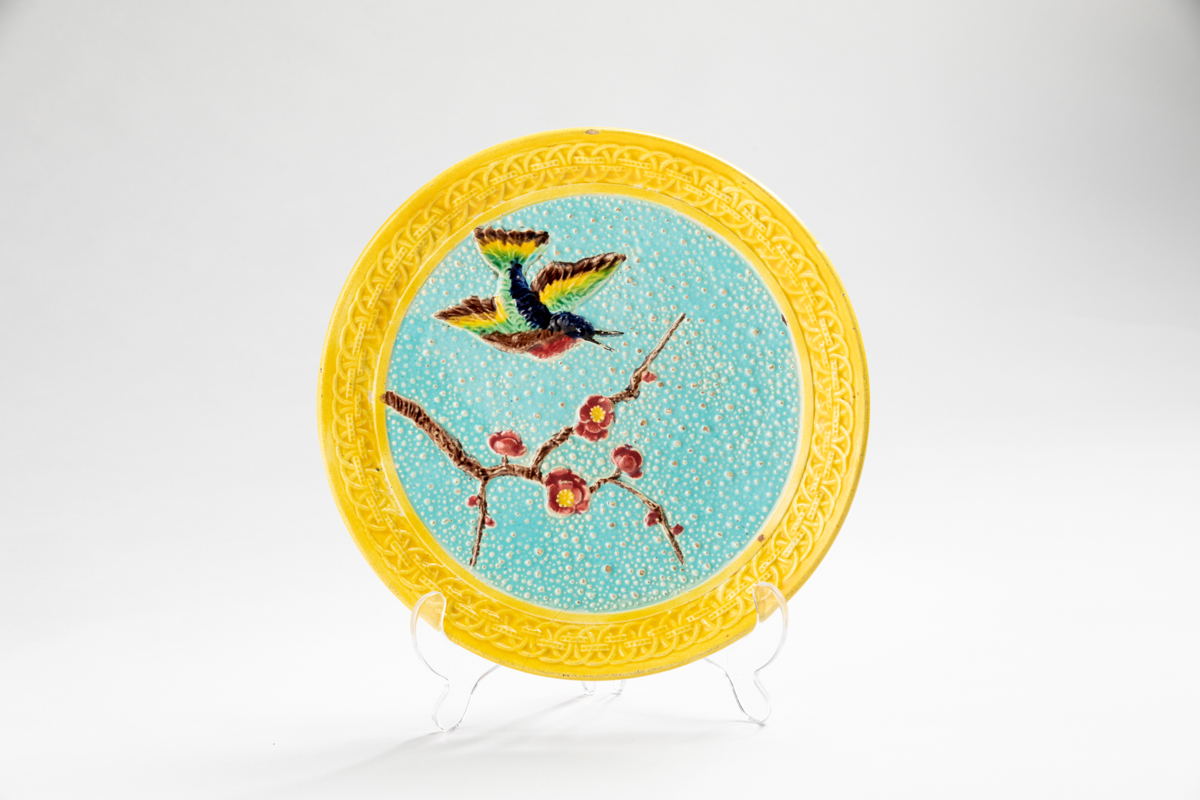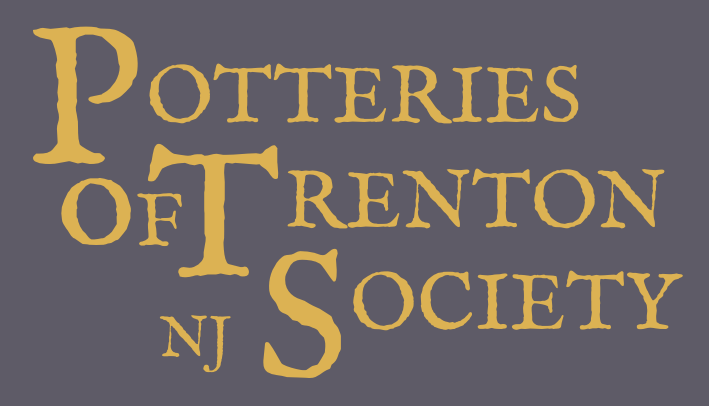
By the 1880s, Trenton was awash in pottery start-ups. Eureka Pottery’s brief history is a good example of how much speculation was building in the industry at the time.
In early 1883, Leon Weil established a small pottery at the corner of Prince and Mead Streets in a one-kiln pottery works that he leased from Thomas Whitehead, who might best be described as a serial entrepreneur because of his myriad pottery investments since 1874. Weil had perhaps even less acquaintance with the making of pottery than Whitehead. Prior to his arrival in Trenton he had had a wholesale liquor distribution business in Philadelphia that had failed in 1880 for a large amount, which he had not settled with his creditors. The money for his pottery start-up in Trenton came from his wife Rebecca and his mother-in-law.
This little pottery specialized in brightly colored majolica. The ware had a special niche in the US ceramics market by this time and no doubt the trade was looking for stylish goods in charming patterns that could be sold cheaply to the country market. Although Eureka’s low-relief press-molded patterns were largely copied from English wares, the quality of the glaze colors lifted the ware above many of its American competitors. The “small but busy establishment” employed about twenty paintresses when production began.
The Trenton correspondent for the Crockery and Glass Journal thought Eureka’s first offerings were “ordinary,” but this critic’s assessment brightened by the fall, when he noted that the new designs were “a credible departure for a modest concern.” The new designs surely included this charming plate with bird and blooming prunus branch. It came in several variations that shifted the basic yellow, red, blue, green and brown palette around the plate applying the colors variously to the background, border and decorative elements.
By February 1884, Eureka Pottery had closed its doors, but there is scant evidence to help us understand why: lack of experience? a kiln failure? cash-flow problems? low margins? Or perhaps Weil had lost the full faith of his investors. – Ellen Denker
For more on Eureka’s colorful majolica wares make plans to attend this year’s Trenton Ceramics Lecture by Laura Microulis and read her chapter “Majolica Made in Trenton, New Jersey” in the new three-volume publication Majolica Mania: Transatlantic Pottery in England and the United States 1850-1915 produced by Bard Graduate Center, New York City, and the Walters Art Museum, Baltimore. Microulis’s lecture is courtesy of the New Jersey State Museum Foundation, Lucille M. Paris Fund and an anonymous donor.
The Trenton Ceramics Lecture will be held virtually via ZOOM on Saturday, April 17, beginning at 1:30 PM. The lecture is free and open to the public, but reservations are required: Trenton’s Majolica Mania, a virtual lecture by Dr. Laura Microulis Tickets, Sat, Apr 17, 2021 at 1:30 PM | Eventbrite. Dr. Microulis is a material culture scholar with a specialization in nineteenth-century decorative arts and design, and she has been part of the curatorial team behind the forthcoming exhibition and publication Majolica Mania.
Plate by Eureka Pottery Company, 1883-1884, press-molded earthenware with colorful majolica glazes, 9.6 in. diameter, Collection of the New Jersey State Museum, Museum Purchase CH1981.7. Photograph by Richard Barros
